By Laurie Mermet, The Invading Sea
Despite Florida ranking among the top states in electric vehicle ownership, it faces a critical challenge: not enough charging infrastructure.
Florida has the second-most registered EVs in the country, with a little over 250,000 as of September, according to the U.S. Department of Energy. But the state only has about 3,500 public charging stations with about 10,500 charging ports, according to the department.
The state has yet to tap into nearly $200 million in federal funding to install chargers. A new state law also prevents Florida cities and counties from requiring chargers in new developments, while requiring new state guidelines for EV infrastructure that are just starting to be written.
“I think Florida is pretty far behind and needs to step up in terms of meeting the needs of the growing number of EVs that are coming to Florida,” said Anne Blair, vice president of policy at the Electrification Coalition, a nonprofit group that works to accelerate the widespread adoption of electric vehicles.
Delays in federal funding
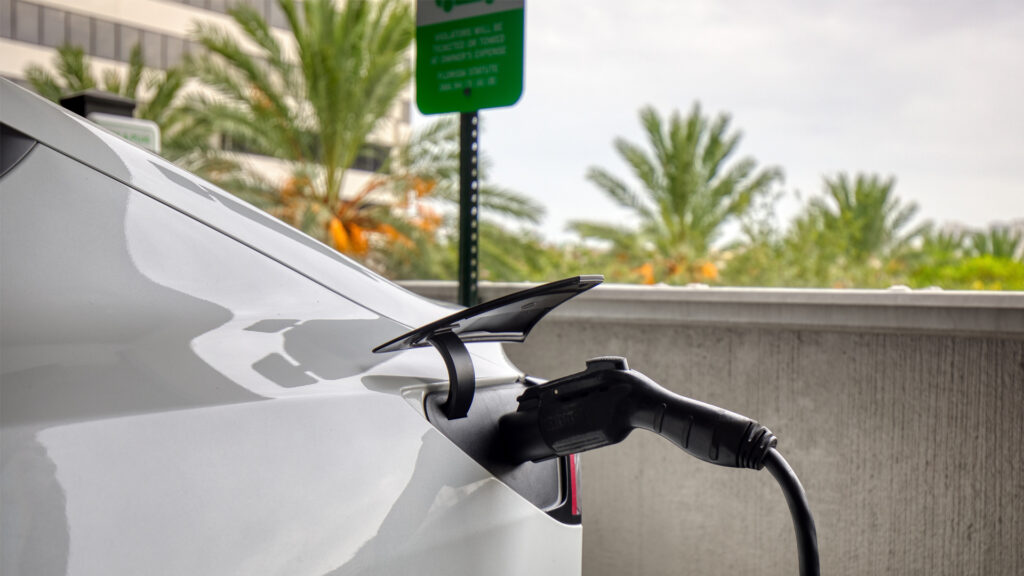
A significant roadblock to EV charging growth in Florida is the delay in deploying federal funding, according to experts.
Florida has received nearly $200 million through the Bipartisan Infrastructure Law’s National Electric Vehicle Infrastructure (NEVI) program, yet the funds remain untouched.
“We’re sitting on about $200 million for the National Electric Vehicle Infrastructure program. We’re in year three, and we haven’t seen anything come out of it,” said Ali DySard, senior policy and program specialist at the Environmental Defense Fund.
The funding is intended to build charging stations every 50 miles along evacuation routes. Blair expressed concern over the state’s slow progress.
“Florida was one of the first states to develop their NEVI plans and establish alternative fuel corridors, but then the money got held up,” Blair said.
Municipalities can no longer require chargers
As the money for charging has been held up, a new state law now prevents cities and counties from requiring developers to install chargers in new developments.
In May, Gov. Ron DeSantis signed Senate Bill 1084 into law, shifting the control of EV charging stations from local governments to the state. Effective July 1, cities and counties can longer longer require EV charging stations.
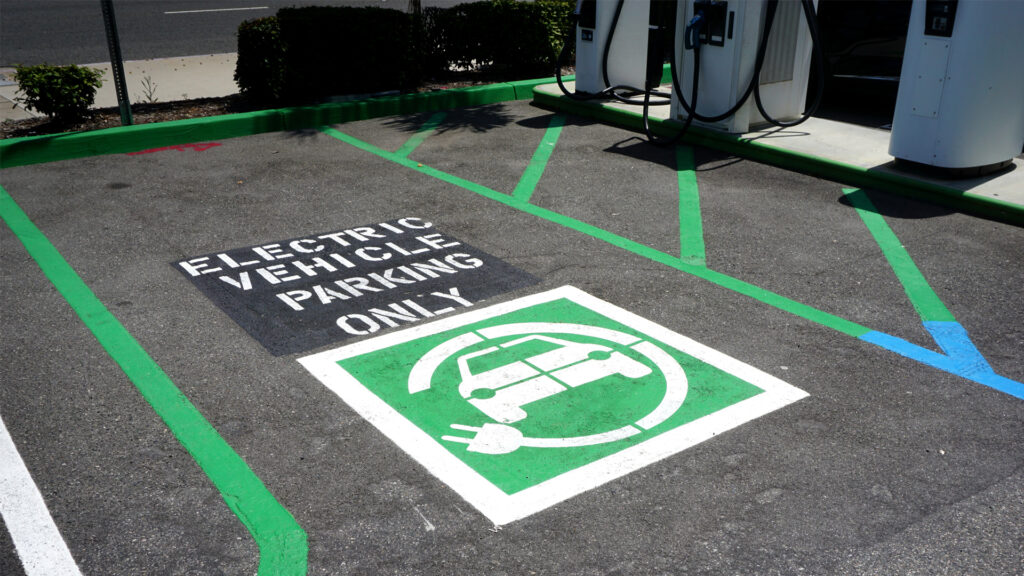
For example, Miami-Dade County required in 2019 that developers set aside parking spaces for EV charging in new projects such as apartment complexes, office buildings and shopping centers. The new law prohibits local governments from enacting or enforcing such regulations.
The law also directs the Florida Department of Agriculture and Consumer Services (FDACS) to develop rules for EV charging stations “to allow for consistency for consumers and the industry.” The department held an initial public meeting on those rules In August, with another workshop scheduled for Oct. 8 in Orlando.
The Electrification Coalition is waiting to see the draft rule, but is expecting the new FDACS rules to cover all public EV charging stations and not just chargers on state facilities.
Advocating for a balance between local and centralized control in deploying EV infrastructure, Blair said that inconsistent permitting requirements across municipalities have created major obstacles.
“We’d like to see a balance between allowing local communities to be able to set some of their own goals and rules, but also not creating further red tape that’s going to slow down deployment of charging stations,” she said.
Blair noted the need for public input in building Florida’s EV charging network, explaining that drivers can share helpful feedback about what they need and their experiences to improve the system.
“This is a totally new way of fueling our vehicles and so we have a lot to learn,” she said.
EV owner experience
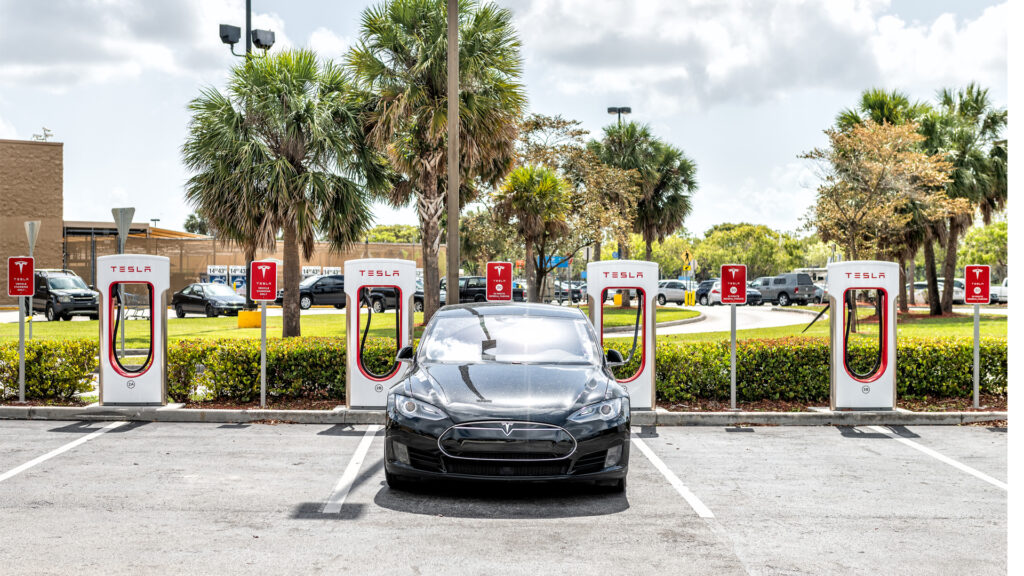
Some EV owners are able to rely largely on home chargers due to their driving habits or use of Tesla’s network of chargers. Mark Merwitzer, associate director of the Transit Alliance Miami, said he drives a Tesla Model 3 and usually doesn’t exceed around 10 miles of driving per day.
“I also live in a single-family home where I can charge every night without any issue,” he said.
Merwitzer praised Tesla’s Supercharger network, saying it’s “the best in the country for any electric vehicle.”
In terms of faster chargers such as Tesla Superchargers and Level 2 chargers, Florida outpaces other states. Superchargers can provide up to 200 miles of range in 15 minutes, while Level 2 chargers typically take four to 10 hours to charge an EV from 0 to 80%.
Merwitzer has not noticed any major areas lacking in charging infrastructure, but acknowledged challenges for residents living in rural areas or in condominiums with limited charging options.
“It’s great if you own a single-family home, but it’s not so good if you have to share the same charger with like 10 other people,” he said.
Rural areas lack charging stations
In rural areas, smaller municipalities may struggle to access federal grants for charging stations. DySard said larger municipalities typically have an easier time applying for these grants, while smaller or rural ones may lack the staff or resources needed to write and submit grant applications.
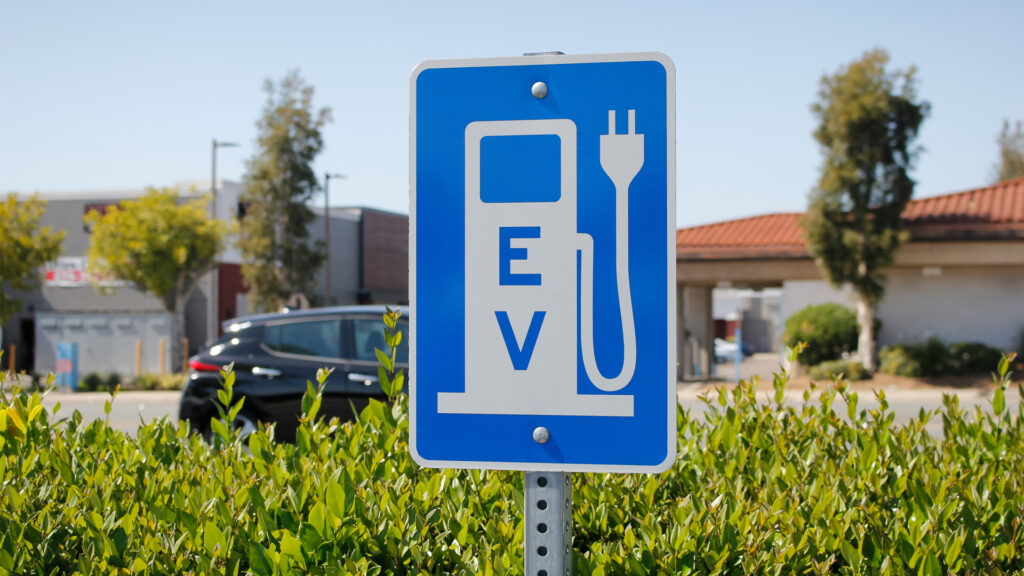
“We definitely don’t want to see rural areas be left behind,” she said.
DySard stressed the importance of EV drivers having a “seat at the table” to prevent unanticipated consequences, such as extra fees or taxes that could result from their lack of involvement in the process.
Despite the ongoing state rulemaking processes, DySard says public awareness remains low.
“I think a lot of times stuff is done behind the scenes or just done really quickly that the public doesn’t have a chance to weigh in or know about it,” DySard said.
Merwitzer, despite his involvement in transportation advocacy, shared a similar opinion.
“I work for a transportation nonprofit, and I was totally unaware of this rulemaking process or the implications or what’s being proposed,” he said.
Safety concerns
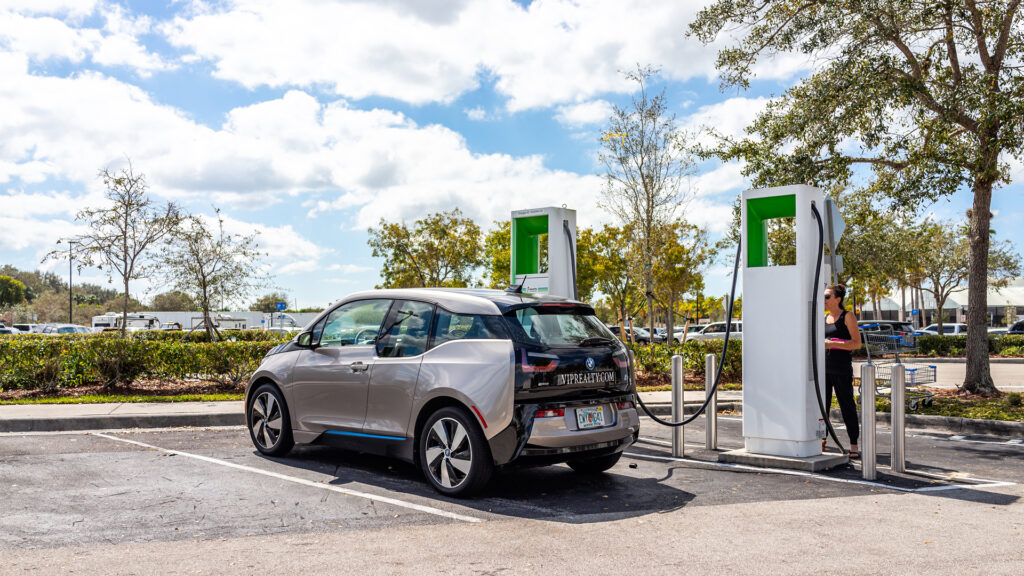
Blair said that misinformation is another roadblock to EV infrastructure development, particularly misconceptions about EV safety issues such as battery fires.
One example is the coverage of two electric vehicles catching fire after being submerged in saltwater during Hurricane Idalia in September 2023. Similarly, DeSantis advised EV owners to move their vehicles to higher ground ahead of Hurricane Helene to prevent potential fires from saltwater exposure.
Blair said that lawmakers need to make a decision on EV safety based on accurate information “and not just alarmism about a new industry, because I’m afraid that Florida is going to ultimately lose out if more and more restrictions get put on deployment of charging infrastructure.”
She thinks that Florida faces significant challenges but has great potential, especially if the state can release its federal funding requests and build more infrastructure.
“China is well ahead of us and if we’re going to compete in the clean transportation future, we’re going to need to step up our investment,” Blair said.
Laurie Mermet is a Florida Atlantic University senior majoring in multimedia journalism who is reporting for The Invading Sea during the fall 2024 semester. Editor’s note: This story has been updated to include the date for an upcoming workshop on EV infrastructure rules. Banner image: Chargers for electric vehicles in a mall parking lot (iStock image).
Sign up for The Invading Sea newsletter by visiting here. If you are interested in submitting an opinion piece to The Invading Sea, email Editor Nathan Crabbe at ncrabbe@fau.edu.



